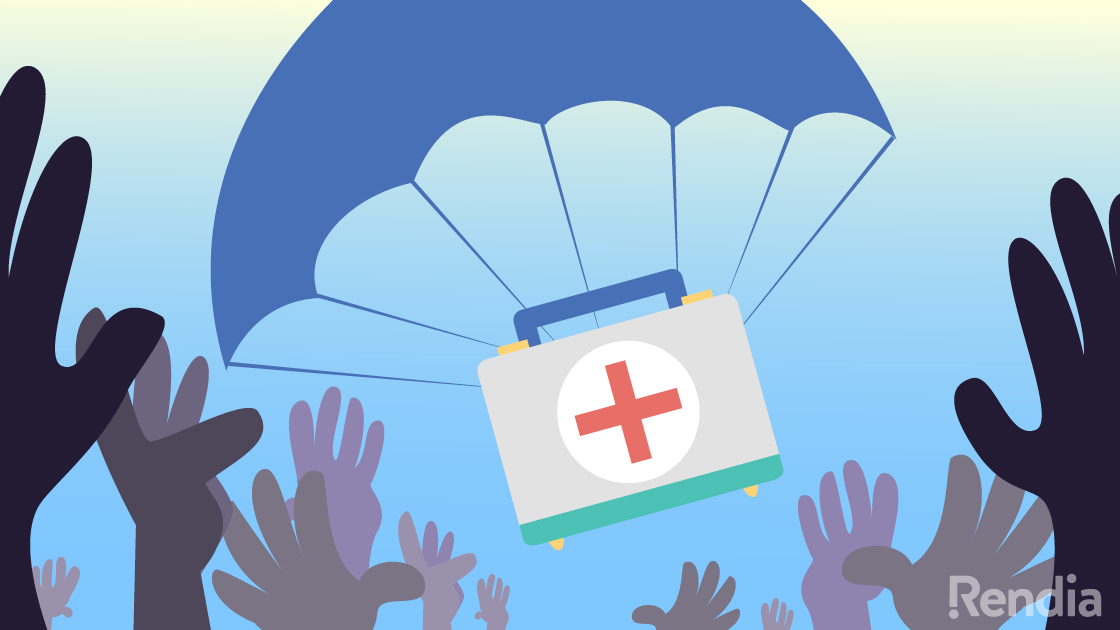Planning and preparedness are key to meeting your business’ and patients’ needs
Hurricanes, wildfires, flooding, and now mudslides… the list of natural disasters that have hit various parts of the U.S. in recent months goes on and on. Medical practices were not spared, yet patients need doctors more than ever during emergencies. How prepared is your practice to weather a major storm?
It could happen to you
When Hurricane Katrina hit the New Orleans area in September 2005, Patricia Farris, M.D., was unprepared for the damage it would cause to her dermatology practice. The roof was ripped off, water damaged the office equipment and destroyed bottles of Botox and filler, and patient records were scattered everywhere, she told the Dermatology Times.
Just as Dr. Farris was surveying the damage, a patient called to find out her pathology results. Luckily, the doctor was able to locate the patient’s information, but the practice was essentially shut down for seven months following the hurricane. “I realize now, some [things] could have been prevented,” she said.
After a major disaster, 40 percent of businesses don’t reopen and another 25 percent fail within a year, according to industry data.
An estimated 40 percent of businesses don’t open again after a major disaster, and another 25 percent fail within a year afterward, according to the Institute for Business and Home Safety. But with some planning, and by utilizing technology wisely, your practice doesn’t have to be one of them.
Go paperless
If you haven’t made the move to an electronic health record (EHR) already, what are you waiting for? According to the most recent data, nearly nine in 10 (87 percent) of office-based physicians have adopted an EHR. Despite usability issues, electronic records are the best way to store patient files in a safe, accessible manner.
Practice staff should be able to access electronically any data patients might need, from biopsy results to financial info.
Doctors and practice staff should understand how to virtually access any data you might need to communicate to patients, said Dr. Farris, whose practice uses the cloud-based EMR called EZDERM. “Know how to access biopsy reports and other important information no matter your location.”
In addition, take advantage of paperless recordkeeping for financial and tax records, recommends the IRS. Sign up to receive bank statements and tax documents electronically. “Be sure you back up your electronic files and store them in a safe place,” notes IRS.gov. “Making duplicates and keeping them in a separate location is a good business practice.” Ideally, the backup location should be far enough away from your home or business that it would not be affected should a natural disaster hit the area.
Communication is key
In August 2017, Hurricane Harvey made landfall in Texas, causing billions of dollars in property damage, massive power outages and flooding, and 88 deaths. According to the Ophthalmology Times, “Despite severe challenges, the Houston Methodist Hospital system maintained continuous operation” at its eight hospitals, which includes The Blanton Eye Institute. Doctors were able to help the thousands of evacuees who lost glasses and eye medications or suffered eye injuries and disease.
In an article for the Times, doctors Amy Coburn, M.D., Hilary A. Beaver, M.D., and Andrew G. Lee, M.D., of The Blanton Eye Institute credited the hospital administration’s disaster response planning and outlined several key factors in their success at staying up and running and treating patients. Among the top three factors were “technological developments enabling constant communication.”
Having a secure patient portal to mass communicate with patients was a lifesaver for one practice following a major hurricane.
In the event of an emergency, doctors must be able to keep in contact with practice staff and patients. One thing that made a big difference for family medicine doctor Joseph Scalia, M.D., whose six-physician practice in New Jersey was out of power for an entire week following Hurricane Sandy in October 2012, was having a patient portal for mass communications, he told Physicians Practice. He discovered the need for this during the previous year’s hurricane.
“After Irene, we realized there has to be some way we can appropriately mass communicate with patients,” he said. “What happens through using e-mail is you’ll start getting patient e-mails back with information [such as] ‘I have, X, Y, Z, problem.’ How do I know someone who isn’t computer savvy isn’t going to hit ‘reply all’ and send their information to 12,000 patients?” His patient portal was key, because if they have Wi-Fi or cellular networks, patients are able to directly communicate with their doctor during the time of emergency, he said.
For more on this topic, see How to Make the Most of a Patient Portal
Make sure you’re insured
Dr. Farris strongly recommends practices get business interruption insurance. While she questioned the need for it a few weeks before Katrina hit, she was glad to have a policy in place during the seven months her practice was shut down. Despite making no income, she still had to pay her employees, malpractice, rent, and other bills during that time. “That policy paid an incredible amount of my losses, and is worth the expense,” she said.
Check out government resources for emergency preparedness and business continuity planning.
To find out more, check out the U.S. Small Business Administration’s emergency preparedness resources. These include disaster-specific checklists and safety tips that can help you prepare for an earthquake, fire, or winter weather emergency. FEMA offers a Business Continuity Planning Suite that practices of any size can download for training and planning purposes.
Take it from those who have weathered the worst storms and managed to keep their practices afloat. “We learned our lesson,” said Dr. Farris. “I can’t say this strongly enough — a little planning can make the difference between staying in business and losing everything.”
For more articles like this, visit the Practice Management section of our blog.

